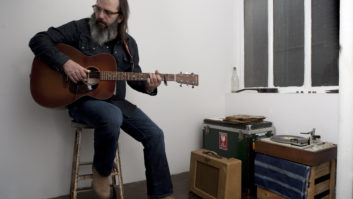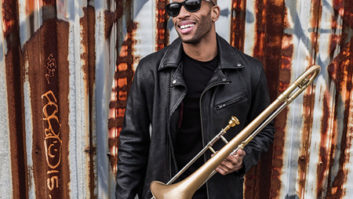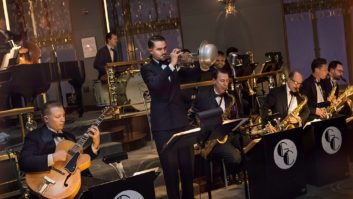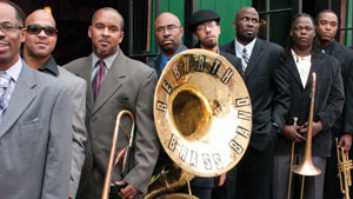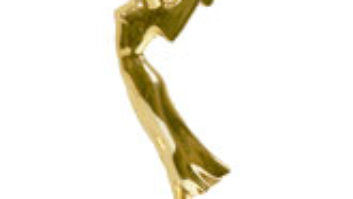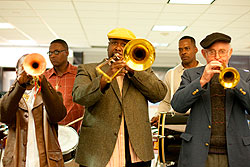
Courtesy HBO
The acclaimed HBO Series Treme ended its 10-week first season about a month ago, but the show’s many fans are still buzzing about its eventual release on DVD (date still undetermined) and what might come next when it returns next year.
Treme (pronounced “tre-may”; it’s named after a largely black, working-class neighborhood in New Orleans, more formally known as Faubourg Tremé) is the creation of producer/writers David Simon and Eric Overmyer; they previously worked together for the past two years on Simon’s HBO show The Wire, and before that on Homicide: Life of the Street. Treme is set in New Orleans three months after Hurricane Katrina devastated that city in 2005, and it follows the struggles of a slew of interesting characters, including various local musicians, a restaurant owner, a radio DJ, a Mardi Gras “Indian” chief, a college professor, his lawyer wife and various others. The city’s great tragedy is still very much in the foreground of the story—how will these disparate (and desperate) people rebuild their lives and/or careers in the wake of Katrina?

Production sound mixer Bruce Litecky at the the two Aaton Cantar digital 8-track recorders
The series is shot on location all around the Crescent City, from the French Quarter to the desolate and destroyed Ninth Ward, and as is befitting a show whose real “star” is the city itself, there is nearly wall-to-wall music in every episode, whether it’s in bars and clubs, or coming out of radios or being played by pass-the-hat musicians on the streets. Some of the lead actors were prominent on The Wire, but many others are locals; some of the “locals” aren’t actors at all but hot players hired to give the show’s many music scenes a little extra verisimilitude. There are also beaucoup musical celebrities playing themselves, including Elvis Costello, Allen Toussaint, Dr. John, Trombone Shorty and Coco Robicheaux.
Simon’s projects are famous for that gritty, you-are-there realism, and this show is no exception. Like The Wire, Treme has no score; all the music is either played by the musicians on screen or is source music pulled from old New Orleans records of every era.
Capturing the sound and the vibe of the locations around town where the show is shot is paramount, which means there is a heavy reliance on production sound. A number of veterans of The Wire are involved on Treme’s sound team, including supervising sound editor/re-recording mixer Andy Kris, supervising sound editor/ADR chief Jennifer Ralston and production sound mixer Bruce Litecky (who, due to a film commitment, joined Treme after the 80-minute pilot had been shot), as well as music superivisor Blake Leyh, who is deeply involved with the live music on the show and the source tunes.
“We’ve pushed pretty heavily to make sure that the production sound is what goes in the show,” Kris comments from Sound One in New York, where he mixes the show. “There’s very little overdubbing or replacing of tracks. There is a bit of ADR, but most of it is additional lines or off-camera lines or some group ADR.” The ADR on the series was recorded in New Orleans at Larry Blake’s Swelltone Studios.


Courtesy HBO
The production recording is a little different than on most shows, in part because a critical component is using a 5.1 mic—in addition to the usual booms and RFs—to capture more dimensional room and street ambience. “We want it to sound like you’re there in those spaces,” Kris says. After first trying out an Ambisonic-style TetraMic, which was ultimately rejected because “you needed to post-process the tracks, so that created a hiccup in our workflow chain,” the team settled on a DPA 5100, recording five surround tracks, but not the sub-channel. (Read the review on the 5100 from last month’s issue.)
“It took us a couple of episodes to get on the same page as to what we were doing,” Kris notes, “because at first Bruce would record this DPA for the first take or two, and think, ‘Great, you’ve got your 5.1 recording.’ But when you keep shooting additional takes, when we cut to those other takes we need to have the 5-channel signal from that take and not from the first couple. So we went back to the drawing board, and said, ‘Okay, if we’re going to do this, no matter where the camera is, that microphone has to be in the same position for every angle that they shoot so we can get a consistent 5-channel bed for the whole scene.”

Supervising sound editor/re-recording mixer Andy Kris
One of the other challenges of using the 5.1 mic is, Litecky says, “Where do you put a 5.1 mic in a small bar? Because we didn’t want to see it all the time—although if you don’t know what it looks like, chances are you wouldn’t recognize it as a microphone. [It looks a little like bicycle seat.] In a lot of the venues where there was music, there were already all sorts of things hanging around on ceilings. Plus, they put lights up there and the mic would sort of disappear. Then we’d tape off the connectors and hide the cable; try to dress it up.”
Litecky’s main rig includes two Aaton Cantar digital 8-track recorders (an X-1 and an X-2)—one serves as the more traditional production recording rig, accommodating the booms (usually two per scene), RFs and plant mics; the other devotes five channels to the DPA surround mic, with the remainder for spot iso tracks, which could include a direct input from an instrument. “I like almost everything about the Cantars,” Litecky says. “J.P. Beauviala, who’s the head of the company, had worked with Nagra, and this machine evolves some of the features of the Nagra, with a selector on the front that extends the functions, so from an ergonomic standpoint it’s a very interesting machine. It has a wonderful feel to it. The Cantar also has five excellent microphone preamps and that was one of the reasons to use it for the 5.1.”
Occasional scenes also called for additional recorders—a Sound Devices 744 provided a few more tracks and Litecky used a Zoom stereo recorder from time to time to fill in some ambience on complicated street scenes.
Depending on the scene, mics might include Schoeps, Neumann or Sennheiser shotguns: “I recorded a lot of the production tracks for the music with mid-side: a stereo microphone, but it uses a directional microphone for the front and a figure-8 for the side, and it goes through a matrix and you combine the left side and right side and it makes stereo out of it. The advantage for post-production is you can dial in the width of the stereo field. I know Andy liked the mid-side because he was able to dial in, listen to a space in its simplest stereo form and then add additional elements.”
Typrically, Litecky would also employ five or six radio mics in most scenes, choosing a Sanken COS11D-PT low-gain “red dot” model: “They allow me to handle a little more sound pressure level from the music and not hit the limiter so hard,” he says. “It was difficult to set the trim on my radios so they would do a good job for the music, yet not be too noisy for the quiet dialog.”
His main mixer is a Cooper 208, “and then I also have a Cooper 306 for some of the big music scenes. We would use the mixer as a mic preamp to drive the additional channels for the Cantar.”

Courtesy HBO
Further complicating the show’s production sound is the fact that there are always two cameras rolling—two sonic perspectives to cover—and because of the importance of the music being performed live in so many scenes, musicians are usually playing continuously during scenes without regard to dialog that may be happening in the same room. “It was determined the music would be much better if it was allowed to flow,” Litecky says. “It also sort of ran contrary to the whole story line and the sense of what this music’s like.”
He adds that it was also a conscious decision to keep the grit and funk in the stage sound for the most part: “We could record our trombonist with a $3,000 ribbon microphone or we could use the same one they’re using onstage for the rest of the instruments, and that’s a gutsy call in some cases to ‘go natural.’ We could also go in there with a multitrack recorder and mike every instrument or every cabinet, but that’s not what the show’s about. It has to still sound good, or at least pleasing, but it’s not supposed to sound polished.
Another important component comes from the backgrounds, many of which are built up from 4-track recordings made around town by Jennifer Ralston and cut by Stuart Stanley, who also works on editing dialog. Kris explains, “When we were getting started, Jen was down there interviewing people, and asking, ‘What did the city sound like after Katrina?’ And the residents said, ‘Well, there were no birds for weeks; they left. So did the crickets at night.’ When we get the first cut from the picture department, they usually do a temp soundtrack, all the night scenes had crickets and all the day scenes had birds, and we decided, ‘No, that’s not right, we have to make it real.’ And we found out that helicopters were still flying weeks after the storm and humvee’s were still patrolling the neighborhoods, so we made sure we had helicopters and humvees in the soundtrack. We were trying to create this feeling that there’s parts of the city that are just desolate, and then elsewhere there are these pockets of life, in the bars and nightclubs.”
After each episode is edited—about six weeks after shooting—Ralston sits down with David Simon for a spotting session where he’ll determine if there are new lines he wants to add. He and Ralston will decide what sort of loop group work needs to be done to beef up certain scenes. Then, over the next week to 10 days, the ADR is recorded, the original mulitrack location recordings are conformed and cleaned up, background recordings are honed, and Foley is recorded and edited. “We do a lot with DigiDelivery back and forth between Sound One and New Orleans,” Kris says. “Jen will send her pass of backgrounds, and Stuart will fill in whatever Jen hasn’t recorded. We try to keep it right. We’re not going to pile 30 tracks of backgrounds for a scene in a living room.”
Blake Leyh does a premix of the music “on an HD rig at his house,” Kris says, “and he’ll take an editorial pass of weeding out tracks that we don’t need, or if something needs a little sweetening he might do that, too; bring a musician in or do some occasional MIDI.” Kris does the final mixing of the various elements within Pro Tools at Sound One.
In the end, “David Simon comes to every mix review and he has to sign off on it. We did 60 episodes of The Wire, and now we’re 10 episodes into this so we’re pretty much on the same page about what everybody expects to hear. David definitely calls all the shots, but we have full reign. We know what he wants, but it’s up to us to enhance that and make it shine.”
Blair Jackson is
Mix
‘s senior editor.
